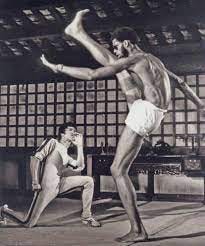If this is your first Provoked newsletter issue, learn more - here
For years, I have been researching and writing about psychological flexibility, which is often renamed emotional agility.1 One of the ways psychological flexibility manifests is the ability to use emotions effectively to get the best possible outcome in a situation.

Psychological Flexibility in Action
As coach of the Los Angeles Lakers, Pat Riley won four National Basketball Association championships, and he is one of the winningest coaches in history. During the first half of a particular game, his team was a freaking mess. Players joked around, danced, gawked at cheerleaders, chatted with celebrities in the expensive courtside seats, and seemed distracted on the court. With one exception - future hall of famer, Kareem Abdul Jabbar.2
At halftime, Riley threw a fit. He yelled. He flipped over a table with over a dozen cups of water. Only one person took the blunt of the anger, drenched with water - Kareem. Seeing this, his teammates experienced shock and guilt. Kareem played incredible on the court; it was the others who enraged Coach Riley. Those players felt a sense of obligation to Kareem who absorbed a punishment meant for them. So much so, that the players reset with vigor and overcame a 20 point deficit to win. Thing is, Riley intended for the water to land on Kareem. A time urgent leadership strategy that worked.
Does anybody think the team would have played better if Riley chose mindful, compassionate, transformational leadership in the middle of a fast-paced, packed auditorium? Expressing momentary indignation —in this instance—was a solution to match the immediate problem.
This is psychological flexibility in action. This is emotional agility in action. Viewing flexibility/agility as a single spectrum, however, is too simplistic to understand humanity.




